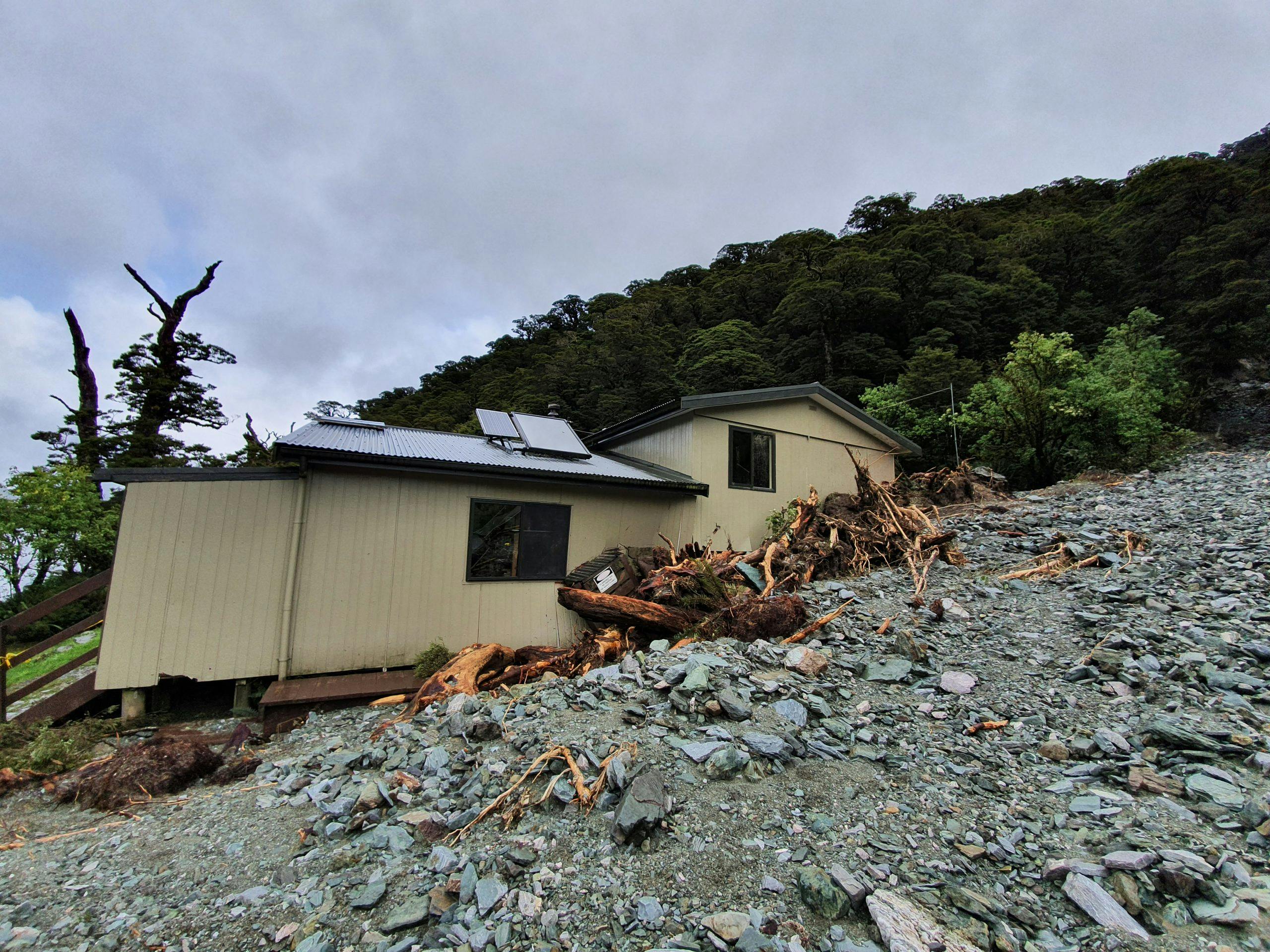A wrap of the biggest stories and best writing about the outdoors from New Zealand and around the world.
The Routeburn Track’s Lake Howden Hut won’t be rebuilt after it was destroyed by a mudslide in February, Stuff reports.
DOC operations director southern South Island Aaron Fleming said the Great Walk hut was damaged beyond repair and would be removed.
“It’s neither safe nor practical to repair the hut as is,’’ he said.
The hut was located around 1.5 hours from The Divide, and most walkers opted to stay at Lake MacKenzie Hut, which is a 4-5hr walk.
“However, Lake Howden Hut provided hikers with an easy overnight hiking option in Fiordland National Park and was used by a range of visitors,” Fleming said.
“We will be working with our partner and other stakeholders to consider the ongoing demand for backcountry experiences in the region and how we may meet that need, however, no decisions have been made.’’
Hunter finds near-extinct plant
A goat culler has discovered four ngutukākā, or kākābeak, plants in Hawke’s Bay – a huge find for the plant that’s on the verge of extinction.
Wayne Looney stumbled across the plants in the Upper Mangaone Stream, TVNZ reports.
“When I found it… there were goats on the slip above it. I was hunting and shooting those,” he said.
“I found the plant afterwards. It was only because of the red flowers I saw.”
Looney has found kākābeak specimens before at Lake Waikaremoana and Mohaka, and of the 123 known plants in the wild, he has found five per cent.
Scientists to model effects of the next Alpine Fault quake
Scientists are working to understand the extent of the next major rupture of the South Island’s Alpine Fault.
The team, led by Professor John Townend of Victoria University and Dr Caroline Holden of GNS Science, aim to build a state-of-the-art, 3D picture of the potential ground shaking effects, Otago Daily News reports.
“When the Alpine Fault next ruptures, it will produce seismic waves that propagate out in all directions,” Townend said.
“The ground shaking we feel in different parts of the country during an earthquake is controlled by the size of the earthquake and aspects of how the fault is slipping but also by the geological structure the seismic waves encounter as they propagate over long distances and by the local geology right beneath our feet.
“What we’re interested in is, how do variations in the likely characteristics of the earthquake affect ground shaking at different locations in the country.”
Shaking in the most affected areas, such as the West Coast, could be unprecedented.
“Given what we know from geological studies of the Alpine Fault, we’re anticipating a major magnitude 8.0-plus earthquake, rupturing 500km of the crust, so the shaking will be felt throughout the South Island, but the intensity and duration will ultimately depend on what happens on the fault.”
Everest summits may get easier with climate change
Mountaineers Reinhold Messner and Peter Habeler first proved that humans could climb to the top of Mount Everest without using supplemental oxygen in 1978. But as of 2019, only 208 individuals have ever achieved this feat—2.1 percent of the more than 10,000 people to reach earth’s tallest peak. Only one, Ang Rita Sherpa, a Nepali climber known as the Snow Leopard, has pulled it off in winter.
But these exclusive clubs might soon have more members, thanks to climate change.
As the world gets warmer, the air pressure around Mt Everest is increasing, which may make it easier to climb, Outside reports.
With an average global temperature two degrees Celsius warmer than that of preindustrial times—the marker when many climate scientists project we’ll see more dangerous climate-change impacts—air pressure is expected to increase a person’s maximum oxygen uptake by up to 4.9 per cent at the top of Everest.
“It’s like being lower in the atmosphere,” climate scientist Tom Matthews said.
Some of the increases in air pressure are expected to be felt this climbing season.
“You can pick a day that makes it feel like you’re climbing in spring,” Matthews says. “It doesn’t have to be a difficult winter ascent in terms of oxygen availability.”
In other ways, the warming climate may make it tougher to climb the mountain, executive director of Xtreme Climbers Treks and Expeditions Panuru Sherpa said.
Glaciers are shifting and shrinking, more crevasses are appearing and the Khumbu Icefall may become more treacherous.
“[That’s] the challenge of mountaineering – being able to adapt to your environment, to be able to deal with whatever it throws at you,” he said.
Lack of gear to blame for 2018 Nelson Lakes death
A lack of equipment and poor decision-making contributed to a 2018 hypothermia death in Nelson Lakes National Park, a coroner has found.
Malaysian man Chien Han Chee, 25, was found dead near Angelus Hut, after setting off on July 11, Stuff reports.
Coroner David Robinson found Chee died on the Mt Robert ridgeline of hypothermia somewhere between 11 and 15 July.
At the coroner’s request, the Mountain Safety Council completed a review and found Chee was equipped for a summer tramp in reasonable weather, but not for the winter conditions he experienced.







